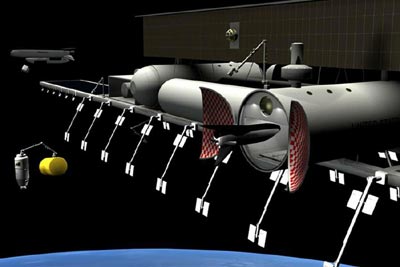Feb 8, 2008
How long did you want that space elevator cable?
Posted by Matt McGuirl in categories: chemistry, geopolitics, nanotechnology, space
Many of you have recently read that a research team at the University of Illinois led by Min-Feng Yu has developed a process to grow nanowires of unlimited length. The same process also allows for the construction of complex, three-dimensional nanoscale structures. If this is news to you, please refer to the links below.
It’s easy to let this news item slip past before its implications have a chance to sink in.
Professor Yu and his team have shown us a glimpse of how to make nanowire based materials that will, once the technology is developed more fully, allow for at least two very significant enhancements in materials science.
1. Nanowires that will be as long as we want them to be. The only limitations that seem to be indicated are the size of the “ink” reservoir and the size of spool that the nanowires are wound on. Scale up the ink supply and the scale up size of the spool and we’ll soon be making cables and fabric. Make the cables long enough and braid enough of them them together and the Space Elevator Games may become even more exciting to watch.
Continue reading “How long did you want that space elevator cable?” »










